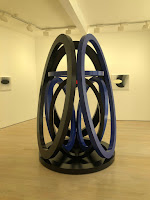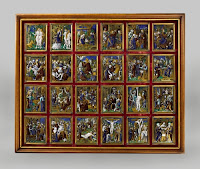Nigel Hall: Tangled Up in Blue

Striking exhibition at Annely Juda Fine Art of new work by the abstract sculptor Nigel Hall. The show included four large works and a selection of smaller ones and drawings all based on the interaction of interlinking circles and ovals. The large works looked magisterial in the white space and looked different from every angle. I particularly liked the blue and black title piece shown here named after a Bob Dylan song. The smaller works felt more domestic but kept the same strength and line. Seeing them with the drawings made you think about the shapes and how they reacted together. Closes 30 April 2021












